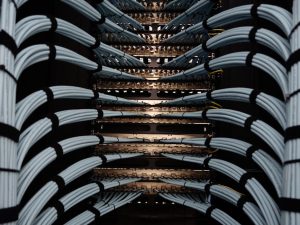Starlink: Revolutionizing Global Internet Connectivity with Satellite Technology

Starlink: Revolutionizing Global Internet Connectivity with Satellite Technology
Starlink is a satellite constellation developed by SpaceX, designed to provide high-speed, low-latency internet connectivity globally. With its advanced technology and ambitious goals, Starlink is poised to revolutionize the way we access the internet. The project, launched in 2019, aims to create a network of thousands of small satellites in low Earth orbit, providing internet coverage to even the most remote and underserved areas of the world.
How Starlink Works
Starlink uses a constellation of small satellites, each weighing around 260 kilograms, to provide internet connectivity. These satellites are launched into low Earth orbit, at an altitude of around 550 kilometers, and use advanced phased array antennas to communicate with user terminals on the ground. The satellites are designed to be highly efficient, using solar power and advanced propulsion systems to maintain their orbit and communicate with other satellites in the constellation.
The user terminals, which are small, compact devices, use the Ka and Ku frequency bands to communicate with the satellites. The terminals are designed to be easy to use, with a simple installation process and a user-friendly interface. They can be used to provide internet connectivity to a wide range of devices, including computers, smartphones, and other mobile devices.
Benefits of Starlink
Starlink has the potential to revolutionize global internet connectivity, providing fast, reliable, and affordable access to the internet for millions of people around the world. Some of the key benefits of Starlink include:
Global coverage: Starlink provides internet coverage to even the most remote and underserved areas of the world, where traditional internet infrastructure may not be available. This makes it an ideal solution for rural communities, emergency response teams, and other organizations that require reliable internet connectivity in remote areas.
High-speed internet: Starlink provides high-speed internet connectivity, with speeds of up to 1 Gbps (gigabit per second). This makes it ideal for applications that require high-bandwidth, such as video streaming, online gaming, and cloud computing.
Low latency: Starlink has a low latency of around 20-30 milliseconds, which is comparable to traditional fiber-optic internet connections. This makes it ideal for applications that require real-time communication, such as video conferencing, online gaming, and virtual reality.
Affordability: Starlink is designed to be an affordable solution for internet connectivity, with prices expected to be competitive with traditional internet service providers.
Challenges and Limitations
While Starlink has the potential to revolutionize global internet connectivity, there are several challenges and limitations that need to be addressed. Some of the key challenges include:
Regulatory hurdles: Starlink requires regulatory approvals from governments around the world to operate its satellite constellation. This can be a complex and time-consuming process, requiring significant resources and investment.
Space debris: The deployment of thousands of small satellites in low Earth orbit raises concerns about space debris and the potential for collisions with other satellites or objects in space.
Interference: Starlink’s use of the Ka and Ku frequency bands raises concerns about interference with other satellite systems and terrestrial networks.
Scalability: Starlink’s constellation of satellites will require significant infrastructure and resources to maintain and upgrade, which can be a challenge for the company.
Conclusion
In conclusion, Starlink is a revolutionary satellite constellation that has the potential to provide global internet connectivity to millions of people around the world. With its advanced technology, high-speed internet, low latency, and affordability, Starlink is poised to disrupt the traditional internet service provider market and provide new opportunities for economic development, education, and social connectivity. However, there are several challenges and limitations that need to be addressed, including regulatory hurdles, space debris, interference, and scalability.


